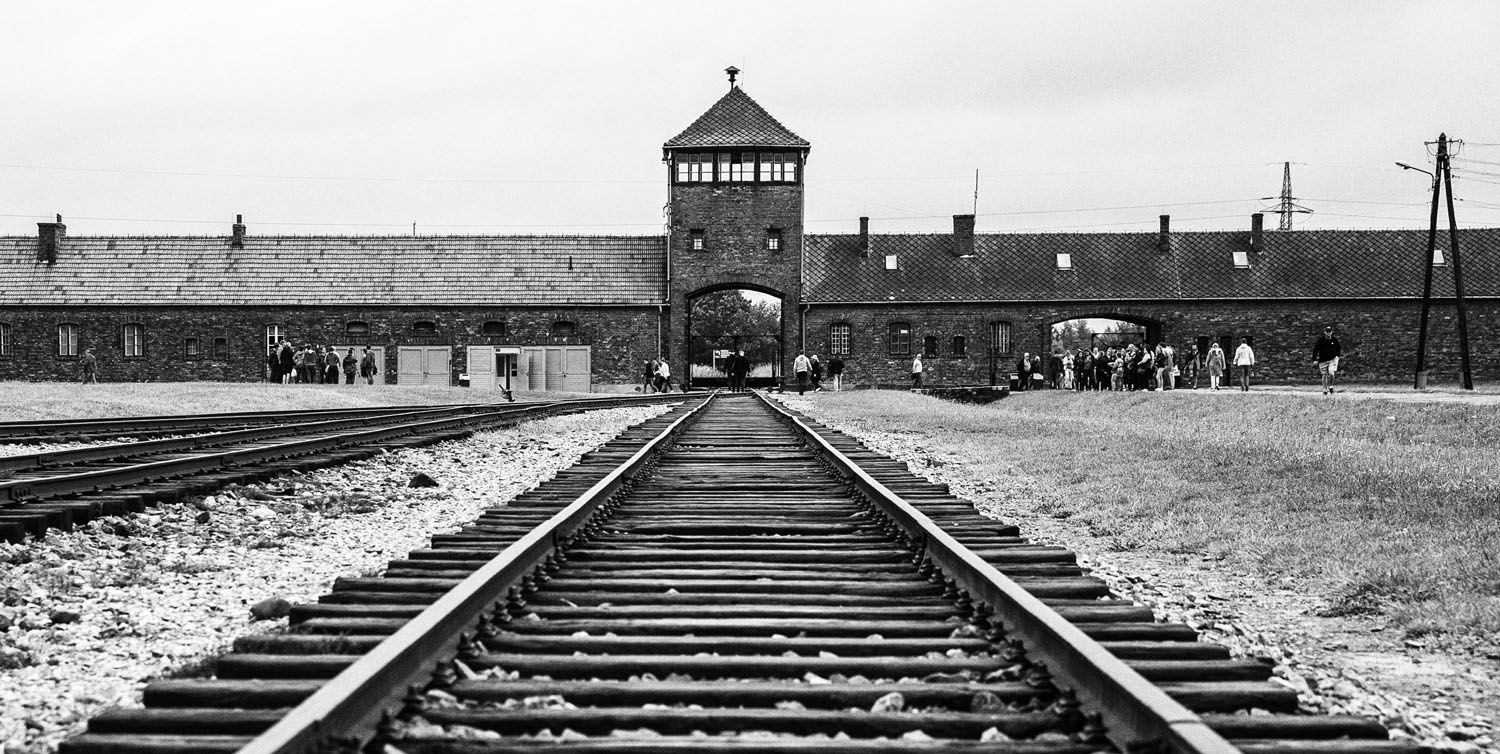The Truth About Auschwitz II
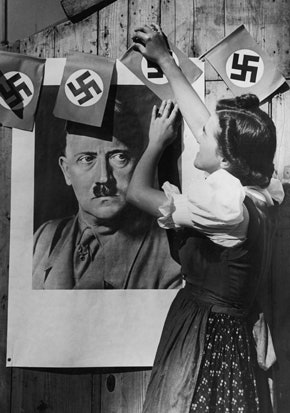
HOLOCAUST STORYTELLERS like to keep us on our toes. The gas chambers at Crematoria I is easily disproved, but never mind that now, because Auschwitz I simply wasn’t ambitious enough. Not enough Jews could be killed in a single day, you see, let alone the hour. There is a quota to meet, and the mystical number is 6 million. What they needed were bigger facilities. More spacious undressing rooms. Humongous gas chambers. Colossal ovens. And if you read my last paper, The Truth About Auschwitz I, then you’ll recall that Auschwitz I had none of those things. Because nobody was gassed as part of some final solution. Regardless, it’s why they apparently constructed a second camp at a site called Birkenau. Or in Holocaust terms, fling the mud against the wall and see what sticks. Very little to none. Speaking of which, chemical tests on the walls have never shown any evidence of gas, as there are far fewer compounds of hydrogen cyanide than in the walls of the disinfection chambers.
In reality, the purpose of the Auschwitz II camp was to house an over-bloated population of Soviet prisoners who were intended to work as laborers in the IG Farben industrial facility, all of which was intended to support the Third Reich’s war effort. Why would the Nazi’s go through all the effort of tattooing identification numbers on prisoners’ arms if they were intended to be gassed after breakfast? That makes absolutely no sense at all, whatsoever. It’s not like the official narrative has their corpses being identified as they’re slid into a burner or thrown into a ditch. Their captors assigned them numbers in ink for the exact same reason that they evacuated the Jews from harms way, when the Communists rolled into town—because they needed their labor force. You will tell me they killed the frail and kept the able-bodied alive. That’s why we’re here. To have “the talk.”
Since I’m destined to live the remainder of my life and afterwards a target of the Zionist media, let’s set the record straight. The Nazi’s were assholes. Do you need that repeated? Anyone who forces Russians, Jews and other political enemies into labor camps, furthermore tattooing their arms as a way of identifying them, is an asshole, wouldn’t you think? It’s certainly what I think. While we’re at it, the Brits were leather cheerios. The Soviets were rusty bullet holes. The Japanese were puckered starfishes. The Americans were a bunch of poop chutes. Throw in the French and the Italians, some real balloon knots, if you ask me.
The War itself was sponsored by the Vatican and such beloved banking families as the Rothschild’s. There’s your enemy. But the Zionist media isn’t interested in making their Slave Masters in the Big House look naughty. They’d rather just make crap up. It’s their way of kicking the dog while its down. And anyways, there are probably a hundred or more articles on the Intel-net decrying “Holocaust deniers” for every single paper such as my own. So, if you’ve managed to succeed in the online labyrinth of media noise makers and find your way here, welcome.
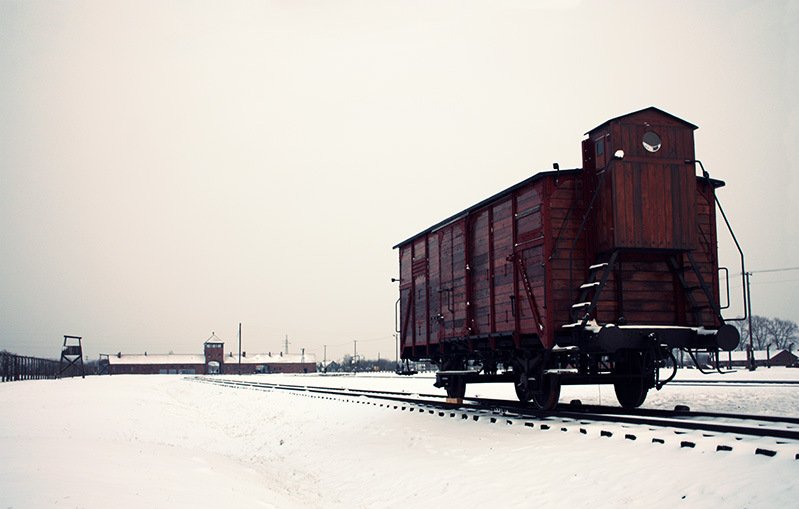
The construction of Birkenau began in October 1941, under guidance of the Waffen-SS. Its intended purpose was to house the swelling tide of incoming Soviets due to Nazi Germany’s invasion of the Soviet Union, as Auschwitz II had the ultimate goal of accommodating some 200,000 prisoners. Even the official narrative admits to that fact. You would think they’d just gas everyone at Auschwitz I. Build a massive “shower facility” there. But since the official narrative once again admits that Crematoria I was never intended to be a gas chamber, and therefore insufficient to the fabricated task at hand, you would furthermore think they’d build practical chambers in the sequel camp, capable of gassing everybody—but no. We cannot expect the Nazi’s to be that competent.
Museum Curators confess that prisoner death rates were especially high during the winter months. Is that because they gassed more people in the wintertime? No. It simply means that winters in Poland, especially at a prison camp during wartime, suck. Also, summertime made for perfect lounging weather around the pool. If the death rate among prisoners rapidly increased throughout the closing months of The War, then it is due to the fact that the Nazi’s were losing on both fronts. Comparing how many Jews died in German camps compared to the number of Japanese casualties in American camps is like attempting to even out the number of German and American civilian deaths. It can’t be done, and for obvious reasons.
After German factories were flattened on the map and trains splintered with bullet holes, Germans could no longer deliver food and medical supplies to the people they were intended for. Meanwhile, as diseases nearly wiped-out entire prison populations, neighboring cities were incinerated in allied firebombing raids. Legit. But you are not expected to use common sense.
 The construction of Birkenau began in October 1941, under guidance of the Waffen-SS. Its intended purpose was to house the swelling tide of incoming Soviets due to Nazi Germany’s invasion of the Soviet Union, as Auschwitz II had the ultimate goal of accommodating some 200,000 prisoners. Even the official narrative admits to that fact. You would think they’d just gas everyone at Auschwitz I. Build a massive “shower facility” there. But since the official narrative once again admits that Crematoria I was never intended to be a gas chamber, and therefore insufficient to the fabricated task at hand, you would furthermore think they’d build practical chambers in the sequel camp, capable of gassing everybody—but no. We cannot expect the Nazi’s to be that competent.
The construction of Birkenau began in October 1941, under guidance of the Waffen-SS. Its intended purpose was to house the swelling tide of incoming Soviets due to Nazi Germany’s invasion of the Soviet Union, as Auschwitz II had the ultimate goal of accommodating some 200,000 prisoners. Even the official narrative admits to that fact. You would think they’d just gas everyone at Auschwitz I. Build a massive “shower facility” there. But since the official narrative once again admits that Crematoria I was never intended to be a gas chamber, and therefore insufficient to the fabricated task at hand, you would furthermore think they’d build practical chambers in the sequel camp, capable of gassing everybody—but no. We cannot expect the Nazi’s to be that competent.
Museum Curators confess that prisoner death rates were especially high during the winter months. Is that because they gassed more people in the wintertime? No. It simply means that winters in Poland, especially at a prison camp during wartime, suck. Also, summertime made for perfect lounging weather around the pool. If the death rate among prisoners rapidly increased throughout the closing months of The War, then it is due to the fact that the Nazi’s were losing on both fronts. Comparing how many Jews died in German camps compared to the number of Japanese casualties in American camps is like attempting to even out the number of German and American civilian deaths. It can’t be done, and for obvious reasons.
After German factories were flattened on the map and trains splintered with bullet holes, Germans could no longer deliver food and medical supplies to the people they were intended for. Meanwhile, as diseases nearly wiped-out entire prison populations, neighboring cities were incinerated in allied firebombing raids. Legit. But you are not expected to use common sense.
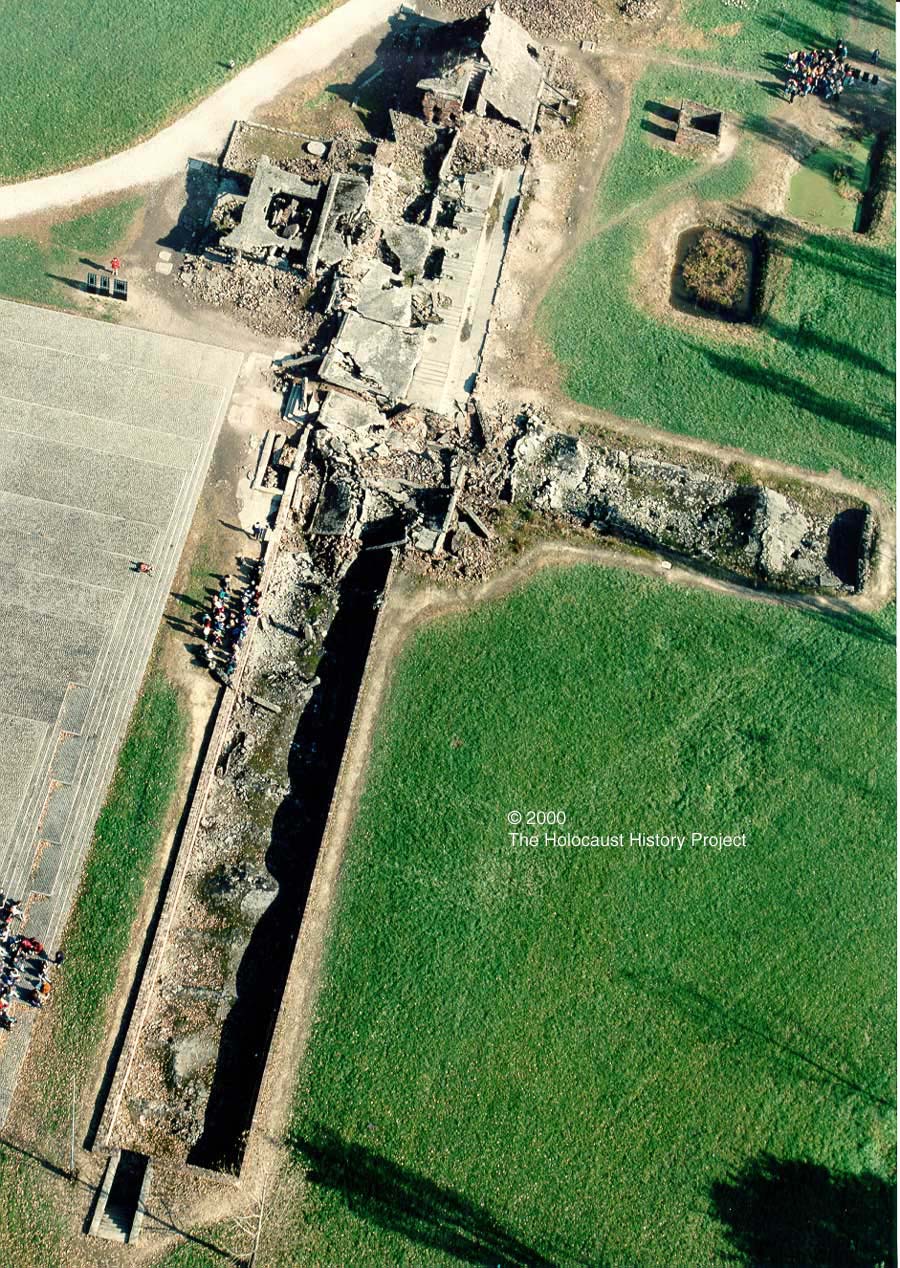 Something like four large gas chambered killing complexes were reportedly built at Auschwitz II as a Magnum Opus to their final solution, beginning operations in March of 1943. Museum Curators claim that two of the gas chambers, aptly titled Crematoria II and III, were located underground next to the above-ground building which housed the ovens, whereas the other two, Crematoria IV and V, were fully situated above ground.
Something like four large gas chambered killing complexes were reportedly built at Auschwitz II as a Magnum Opus to their final solution, beginning operations in March of 1943. Museum Curators claim that two of the gas chambers, aptly titled Crematoria II and III, were located underground next to the above-ground building which housed the ovens, whereas the other two, Crematoria IV and V, were fully situated above ground.
Today, Crematoria II is laid waste, with only its foundations remaining. Convenient. Was Auschwitz a victim to allied bombing? No, it was not. So then, why did the Soviets destroy it? We are not told, but you should be able to guess why. We have already seen the Soviets giving Crematoria I a complete home makeover as part of its “preservation”—which included the construction of a chimney where one never existed at all.
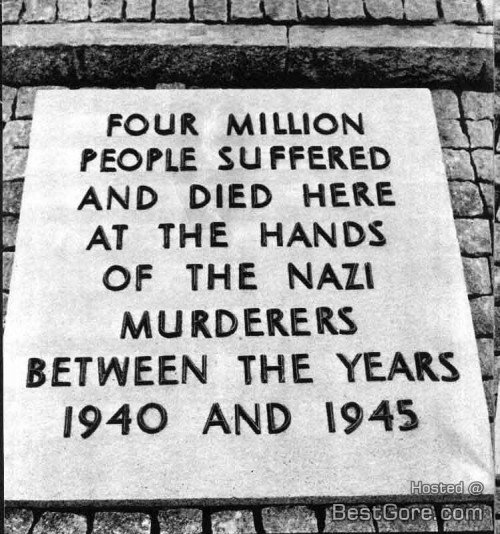 In fact, the plaque which originally accompanied visitors at Auschwitz in 1948, claiming: “four million people suffered and died here at the hands of the Nazi murderers between the years 1940 and 1945,” was removed in 1989. Why? Because the Soviets had placed it there. It was the Soviets who first came up with the 4 million number. And so, with the fall of the Berlin Wall, historians had some noticeable clean-up work. Actually, the work is never ending, but that’s simply how they keep the story fresh for each successive generation.
In fact, the plaque which originally accompanied visitors at Auschwitz in 1948, claiming: “four million people suffered and died here at the hands of the Nazi murderers between the years 1940 and 1945,” was removed in 1989. Why? Because the Soviets had placed it there. It was the Soviets who first came up with the 4 million number. And so, with the fall of the Berlin Wall, historians had some noticeable clean-up work. Actually, the work is never ending, but that’s simply how they keep the story fresh for each successive generation.
Museum Curators have chosen to keep the numbers ambiguous on their latest plaque. Current digits place the Auschwitz death toll at about 1.5 million, a substantial decrease. And yet the total number of Jew killed in the Holocaust still remains at the sacred number. 6 million. How does the math on that work out, exactly?
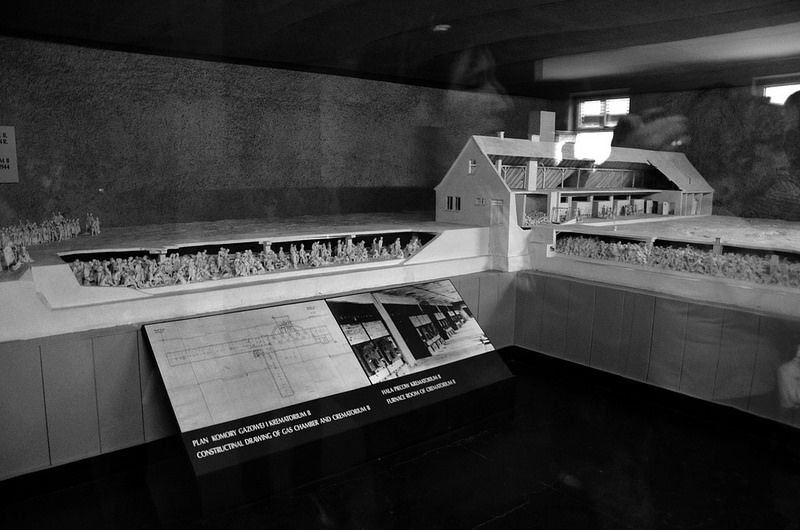
The Auschwitz Museum is kind enough to present us with model intended to “recreate” the Holocaust experience. Accordingly, Jews were herded into a massive underground undressing room, stage left, before being funneled into the shorter of the two chambers, stage right. From here, the reported gas chamber, once again deceptively disguised as a shower room, introduced Zyklon B through metal mesh tubes protruding down from its roof. As you can see in the picture provided, the ovens were housed between the two, but on ground level.
There are fatal flaws to this gas chamber theory. Actually, they reek of pooh. We are expected to believe that as many as several hundred Jews were rounded up into flocks, de-robed, and then offed at the flip of a switch. Now pause and ponder the practical implications of the mental image provided to us. How many do you suppose lost control of their bowels? Serious question. We’re talking about hundreds, sometimes even thousands of naked bodies piled on top of each other. It is in Crematoria II where Holocaust historians tell us the shit hit the fan—quite literally. A sudden and unexpected gassing would demand a relaxation of their muscles. Victims would be taking a dump everywhere. Any Nazi who entered the room afterwards would have been wading ankle deep through piss. We’re talking daily pile-ups of shit. Imagine climbing down into the hole of an outhouse and you’re beginning to see the picture. Did they simply hose the room down between each hourly showing and then give it a spit-shine with a mop? The underground structure would soon be flooded. The ruins of Crematoria II and III are still shown to tourists today, so where are the draining facilities? No Nazi architect in his right mind would construct an underground bunker like that for its stated purpose, but what did the Nazi’s know about exterminating anyone? Leave it to the Zionist media to come up with answers.
Secondly, there is the matter of residue gas trapped between corpses. While dealing with a pile-up of bodies caked in shit, extraction would become an impossible task, given that Crematorium III contained only one single-sized door, serving as an entrance and exit to the underground room. Speaking of which, how did they manage to haul thousands of corpses through a single door and then up an elevator shaft, which had only been designed to take one or two bodies at a time? There is absolutely no precision to this operation. I thought the Nazi’s designed and built the autobahn in order to take their panzers out on a joy ride to Poland.
We are told the people who removed the bodies were work units made up of German Nazi death camp prisoners known as Sonderkommandos. They were usually Jews, forced on threat of their own life, to aid with the disposal of gas chamber victims during the Holocaust. At Auschwitz in particular, Sonderkommandos were required to remove glasses and artificial limbs before dragging each body from the chamber. They even had to go about removing dental work. But first, they were ordered to shave the women’s hair. What’s the turn-around time here? The corpses simply waiting to be burned in their archaic order would be completely backlogged, making everything about this narrative so far beyond the German’s own imagination as to be judged absurd



The German people kept records in like manner of their dress. Which is to say shiny, buttoned, wrinkle-free, and if at all possible, immaculate. You know you’re in a Nazi movie when somebody stops a pedestrian and says, “Show me your papers.” So, we really shouldn’t be surprised to learn that the original architectural building plans for Auschwitz II have survived. And that’s a problem. Just not for me. I thought it might be a good idea to include those blueprints as a matter of public record. Here we can clearly see the two rooms, which Museum Curators insist are gas chambers masquerading as make-believe showers, listed as Leichenkeller 1 and Leichenkeller 2. Unfortunately, I can find my way around Germany just enough to buy a beer or two. Bier. Therefore, I decided to give the online English-German translators the old college try, and wouldn’t you know it, nothing in the nature of gas chambers is even hinted at.
Once translated, Leichenkeller simply means mortuary or morgue. You will tell me they were attempting to deceive humanity and cover their tracks. The German word for shower is dusche. Duschraum for shower room. Why not call it that? Had a Jew actually questioned whether or not they were being led into a shower, a member of the SS need only hold up the blueprint. Who wants to take a shower in a leichenkeller? Kind of makes you wonder if the Nazi’s had built an underground structure simply for the purposes of having a morgue at their disposal. Otherwise, designing something for the wrong purpose defeats the purpose of a blueprint, but again, what does a Nazi know?
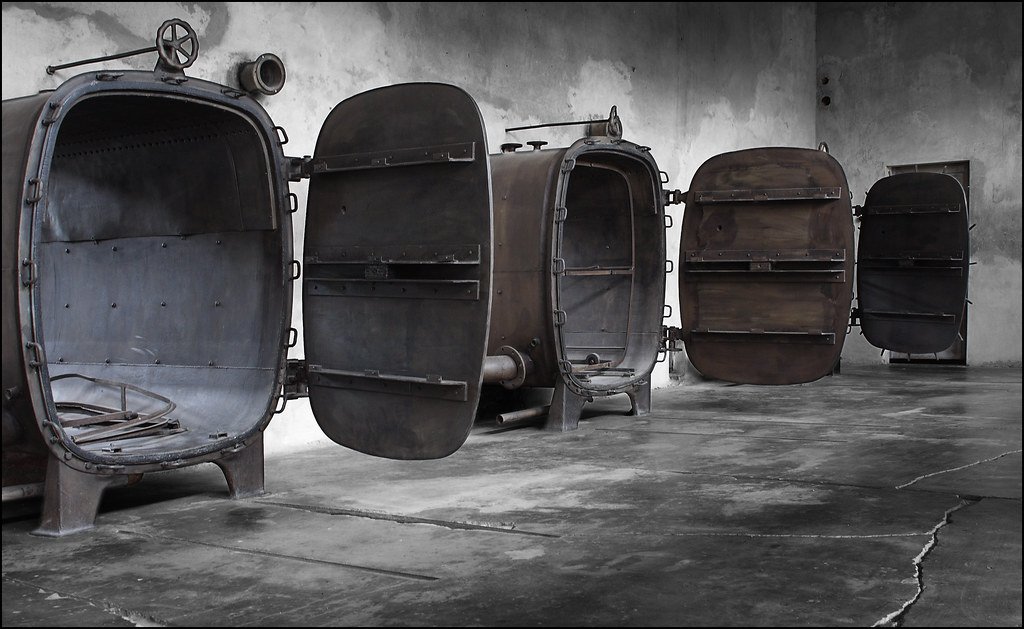
The only other facilities mentioned on the blueprint were delousing chambers. Probably another cover. Ironically, delousing chambers employed the use of Zyklon B, but not because they were gassing anyone. For sanitary purposes, steam chambers were by sheer necessity an art form at Auschwitz, intentionally employed to disinfect prisoner clothing in the ongoing uphill battle against lice. Typhus was an ever-present pestilence at every prisoner-of-war camp. Actually, unlike the impractical nature of their reported gas chambers, Auschwitz had a highly complex and developed delousing system—once again countering the official argument, as “autoclaves” were intended to prevent human death, not cause them.
![AUSCHWITZ: Technique and Operation of the Gas Chambers © Previous Page Back Contents Page 82 Home Page Forward Next Page Photo 31: [PMO neg. no.20995/476] The battery of three autoclaves, south, clean side numbered above the ...](https://unexpected-cosmology.nyc3.digitaloceanspaces.com/wp-content/uploads/2021/05/082-01.jpg)

Wait, what’s this? Are these Auschwitz prisoners delousing as we speak? Mm-hmm, seems so. Must not like lice.
See, here’s how the delousing chambers worked. Dirty laundry was placed on a hanger rack and then rolled through the vault-like door of a two-sided autoclave. After a thorough steaming, the rack was then rolled out onto the clean side of the autoclave, thereby ensuring that disinfected clothing did not become contaminated again with the potentially flea-infected. Auschwitz had several such businesses. Here we can see both ends of an Auschwitz delousing chamber in action. There are prisoners ensuring that contaminated clothing makes it into one end of the autoclave, whereas other prisoners roll them out, once the steaming had done its work. Weren’t the Nazi’s attempting to kill everyone again? Apparently, they liked their victims clean.
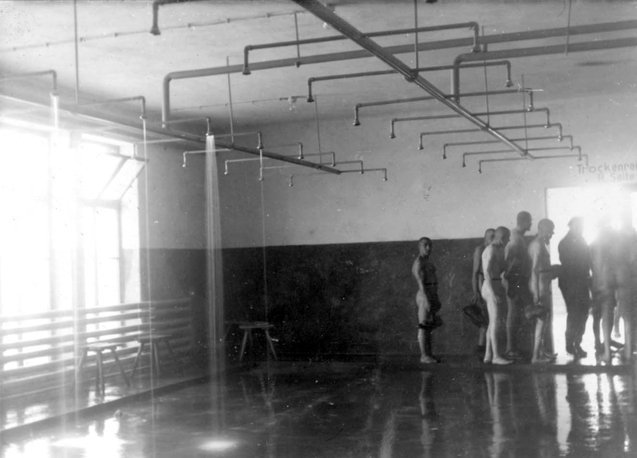
SPEAKING of clean, one of the most circulated pictures of Auschwitz involves naked men leaving a shower room. I probably first discovered this scene in high school, when Illuminati written pamphlets were simply attempting to indoctrinate warn me concerning the Nazi’s penchant for luring Jews into a false sense of cleanliness. Conditioning for the Big Event, I’m sure. Next time they’ll get them.
Aside from the Holocaust narrative, when was the last time that you ever viewed pictures of naked men taking a shower in prison—and more importantly, why would you? Soap and bratwursts. That’s because Museum Curators want you to think about shower-heads whenever Auschwitz rounds the corner of your next guilt trip. If not for gas chambers deceptively disguised as shower rooms at Auschwitz, then the entire Holocaust narrative is exposed for the lie that it is.

Strange though, how a tour of Auschwitz no longer displays the shower nozzles in the very room where the iconic picture was taken—and why is that? Looks like a shower room. Plenty of sunlit windows, none of which are airtight. Couldn’t gas anyone in it had they wanted to. And on close inspection, we can see streams of water pouring out of several nozzles. So, why remove them? They wouldn’t possibly put them on display in—say—a museum, and claim them to be anything other than shower nozzles, would they?
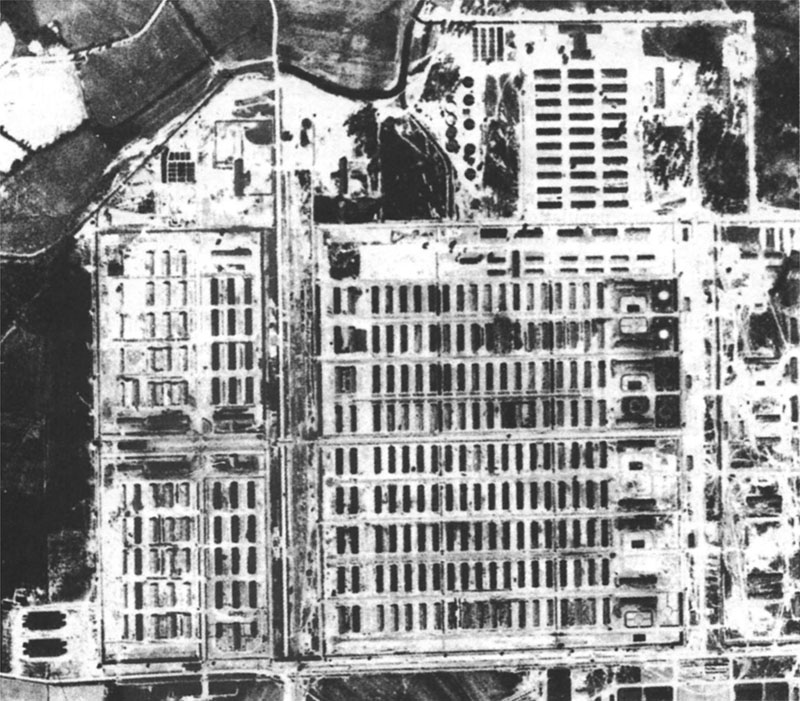
BETWEEN May 15 and July 9, 1944, some 400,000 Jews were said to have been deported from Hungary and then gassed and cremated immediately upon arrival. That’s an eight-week period. The theoretical maximum capacity of the Birkenau crematories was 1,248 corpses per day. I therefore thought it might be a good idea to pull a calculator out and attempt the math on that. Over a 55-day period, we’re looking at 7,272 daily bodies which needed cleaned of their shit, shaved of their hair, relieved of dental work and any other added appendages, and then carried upstairs to be burned. Meanwhile, the max capacity which Auschwitz crematories would have been capable of burning in that timeframe, at theoretical maximum capacity, is something closer to 68,640—not 400,000.
Meanwhile, an Allied aerial reconnaissance photograph, taken of the Auschwitz II Birkenau camp on May 31, 1944, shows absolutely no evidence of mass killings. Where is the rising smoke from 1,248 or 7,272 bodies or whatever? Crematoria II and III are perfectly visible in the upper left-hand corner. Weren’t 400,000 Hungarian Jews being gassed and burned as we speak? There’s no smoke.
It probably has something to do with the fact that the Hungarians in question were transported to another nearby camp, a transit camp, in Auschwitz. Nobody was registered, given I.D. numbers, or tattooed in the temporary Birkenau camp, as they were intended to wait for labor request from armament plants and other facilities within the Reich. German documentation attests to that fact. The 400,000 Hungarians is just another flimsy attempt to rack up the death count and make the 6 million number more believable.
![Sonderkommando photographs taken in KL Auschwitz II-Birkenau, Summer 1944 [Negative nos. 277, 278, 282, 283: Burning of corpses in the open air; Women driven to gas chambers; Tree branches] | The Metropolitan Museum of Art](https://unexpected-cosmology.nyc3.digitaloceanspaces.com/wp-content/uploads/2021/05/img_609d70c6353ad.jpg)
THE SONDERKOMMANDO photographs were reportedly taken in August of 1944 by someone named Alex, a Jewish prisoner, and then smuggled out of Auschwitz through the Polish underground—the film itself being hid in a tube of toothpaste. His full name is Alberto Errera, a Greek Naval officer. The Polish resistance was working for British Intelligence. MI6. And the Jews were all over that, particularly the Rothschild’s. The Wikipedia states that Polish Intel provided British Intel with 43% of all reports from occupied Europe.
The four photographs in the collection are numbered 280–283 by the Auschwitz-Birkenau State Museum. One was exhibited at Auschwitz in 1947 as part of early Soviet propaganda, while the others remained unpublished until 1958. The first two, no. 280 and 281, show the cremation of corpses in a fire pit, shot through a black frame. They tell us it’s from the inside of gas chamber, but there is no way possible to confirm that. Why would a gas chamber even have a window? The framing around the bottom of the so-called window or door or whatever is wildly distorted between pictures 280 and 281, and even the terrain has changed. Somebody has tampered with it.
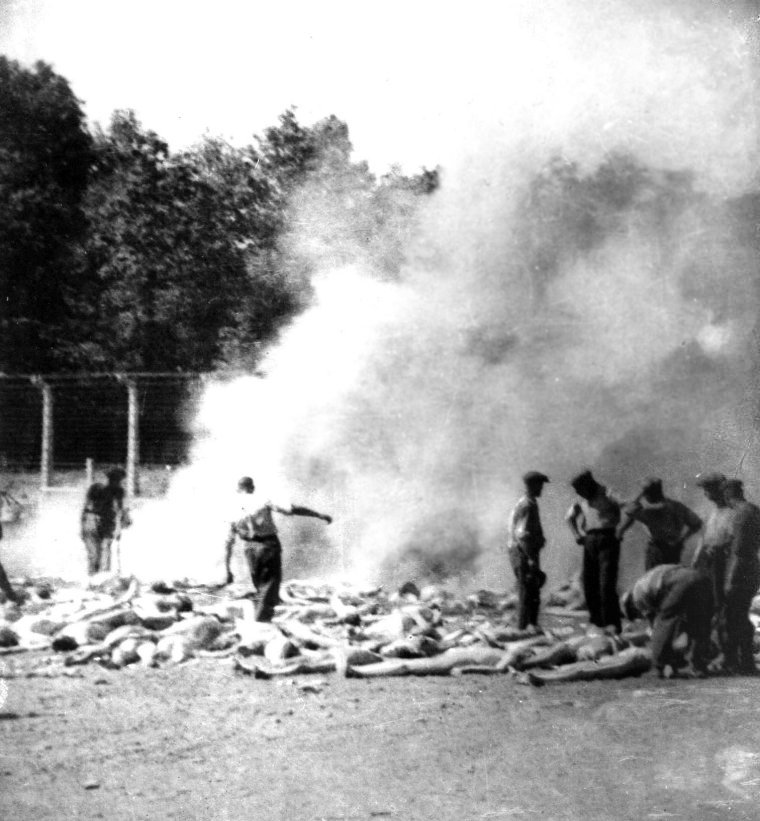 Judging by the fence, we are inside a prison, but the nearby woods look like every other tree line in Germany. Notice how Sonderkommando members are passively disposing of the bodies. Nobody is jumping the guard. His back is turned to other prisoners. If I were a member of the SS and surrounded by the people I aimed to murder, I’d be hugging a submachine gun, perhaps an MP 40. They could have tossed his ass into the flames, had they wanted to. The scene however is not what we are told, as I have already shown the sleight of hand in my paper on Bergen-Belsen. They were working together to keep the camp sanitary, but nobody is being murdered.
Judging by the fence, we are inside a prison, but the nearby woods look like every other tree line in Germany. Notice how Sonderkommando members are passively disposing of the bodies. Nobody is jumping the guard. His back is turned to other prisoners. If I were a member of the SS and surrounded by the people I aimed to murder, I’d be hugging a submachine gun, perhaps an MP 40. They could have tossed his ass into the flames, had they wanted to. The scene however is not what we are told, as I have already shown the sleight of hand in my paper on Bergen-Belsen. They were working together to keep the camp sanitary, but nobody is being murdered.
But more importantly, the black framing surrounding the scene was not always that way. Somebody named David Szmulewski, another member of the Polish resistance, apparently, is accredited with publishing the photographs. The originals were “cropped,” and why would Intel do that? The Wikipedia furthermore adds, “Some of the figures had been retouched to make them clearer.” So, the photos were tampered with then. Why am I not surprised? Thanks for keeping us in the loop, Big Brother. It is not until 1985 that the so-called original prints, complete with black framing, were offered.
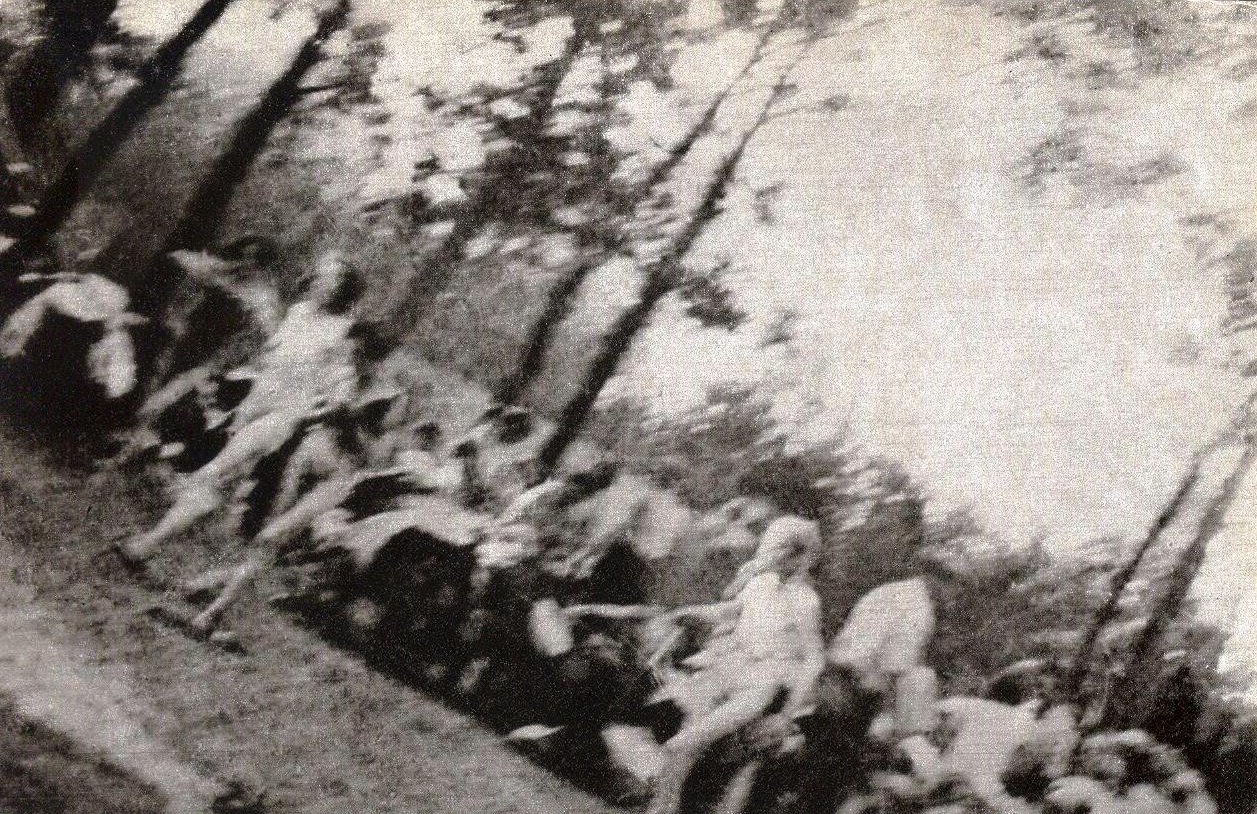
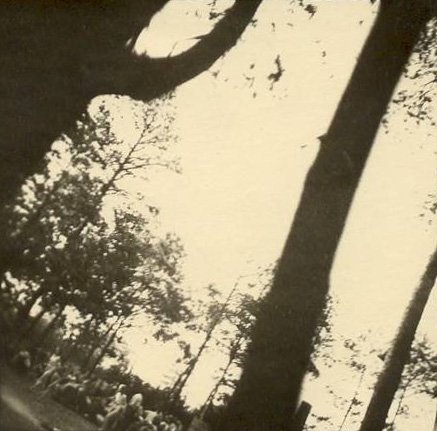 No. 282 shows a group of undressing women. So ominous. The frame is crooked—telling us evil is afloat. Blurry too. It has all the markings of a Sasquatch sighting. We are told they are entering the gas chamber, but for that you will have to use your imagination, as I fail to see one. I thought the Jews were coerced into undressing rooms before entering the make-believe shower stall. And yet they’re out and about in the woods, beyond the tree line. Since when did they get undressed outside of the prison when the gas chambers were located within the barbed wire? Perhaps Intel was out of ideas as to how they could convince everyone an underground spy had managed to slip into the crematoria and out again with a camera tucked into his shirt.
No. 282 shows a group of undressing women. So ominous. The frame is crooked—telling us evil is afloat. Blurry too. It has all the markings of a Sasquatch sighting. We are told they are entering the gas chamber, but for that you will have to use your imagination, as I fail to see one. I thought the Jews were coerced into undressing rooms before entering the make-believe shower stall. And yet they’re out and about in the woods, beyond the tree line. Since when did they get undressed outside of the prison when the gas chambers were located within the barbed wire? Perhaps Intel was out of ideas as to how they could convince everyone an underground spy had managed to slip into the crematoria and out again with a camera tucked into his shirt.
A close-up of 282 shows three naked women in the foreground, while the remainder are still undressing. It’s all voluntary. Where’s the struggle? The first two look like they’re engaged in conversation—just shooting the breeze. While the third seems eager to be somewhere. Why rush it? She’s got her eyes on the prize, but we can’t see what it is. Probably going for a swim. Are those water shoes? Nobody is shaven. Oh, that’s right, at Auschwitz they only shaved the Jews after they were gassed. Let’s go with that. That appears to be a man in a white shirt circling the group. Not a member of the SS. And he’s not carrying a gun, either. Big mistake, bro. You’d think somebody would jump his ass. I’d totally jump his ass. Take everything I’d learned from the Three Stooges and give him the old eye-poke. Wouldn’t you?
Oh, come on. Holocaust storytellers have several hundred Jews getting gassed at one time. Sometimes over a thousand. Parents with children. Nobody is cuffed. I don’t see anyone being led by a rope. Don’t tell me you’d go passively. And if not you—then what about the hundreds of thousands and millions more of Jews who voluntarily removed their clothes and walked passively into the chamber? Somebody would crack. Think about it. You’re already dead. A walking corpse among hundreds and thousands of other corpses. Hell, you’re an army of the walking dead. You’ll never live to see another sunset. There’s only a few SS guards with guns. Jump their ass. Even if they happen to gun you down (as well as everyone else around you), you’ve just managed to disrupt their operation, extend the lives of the next group, and perhaps even take a few of them down with you. Best of all, the history books can’t say you went down like a punk—but no. Or perhaps there’s something else going on. As in—a context to this photo, and it’s not the gas chamber.
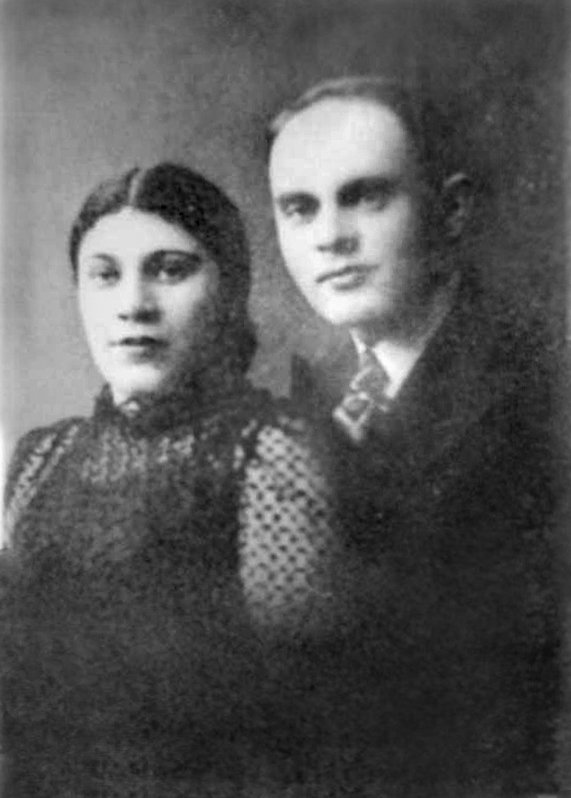
THERE was one revolt.
On 7 October 1944, a group of Sonderkommando Jews reportedly attacked the SS with stones and hammers, killing three of them, and then set crematorium IV on fire with rags soaked in oil. See, that’s what I’m talking about. They then escaped with wire cutters and hid in a nearby barn, which the SS promptly set on fire. Essentially, another repeat of John Wilkes Booth.
The entire episode is a cover story for the diary of somebody named Zalmen Gradowski, who was counted among the dead, but not before burying his tell-all. The Soviets had absolutely no trouble in digging it up near Crematoria III, based on the tip of a friend who had survived the death march. I’ll let you read it for yourself, but it’s freaking brilliant for a Jew who was cooking bodies all day, and well-read in things which Hitler never said. Obviously, literature offered to us by way of a talented typewriter at the Kremlin.
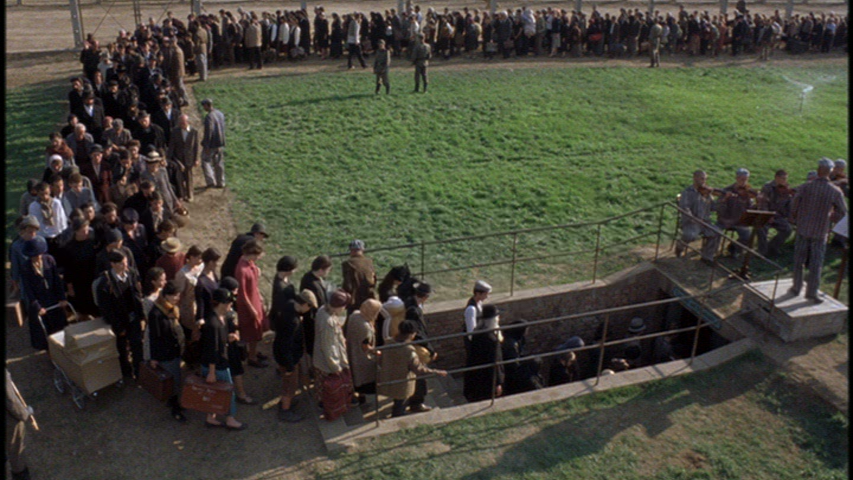
FINALLY, an actual picture of the Jews being led into the gas chamber. From the looks of it, Crematoria II. So, that’s how they did it, those Nazi bastards. They convinced everyone, while still carrying their civilian clothes and baggage, to follow the tune of the pied piper right down into the underground bunker. Is that upper-class British looking woman taking her baby in the buddy down into the shower room too? You’d think that many healthy-looking Jews would fight back, seeing as how they were dead already—but no. Oh, never mind. This is just a scene from The Grey Zone, 2001, in which we are told hundreds of Jews are being marched into an inconspicuous gas chamber. Ridiculous.
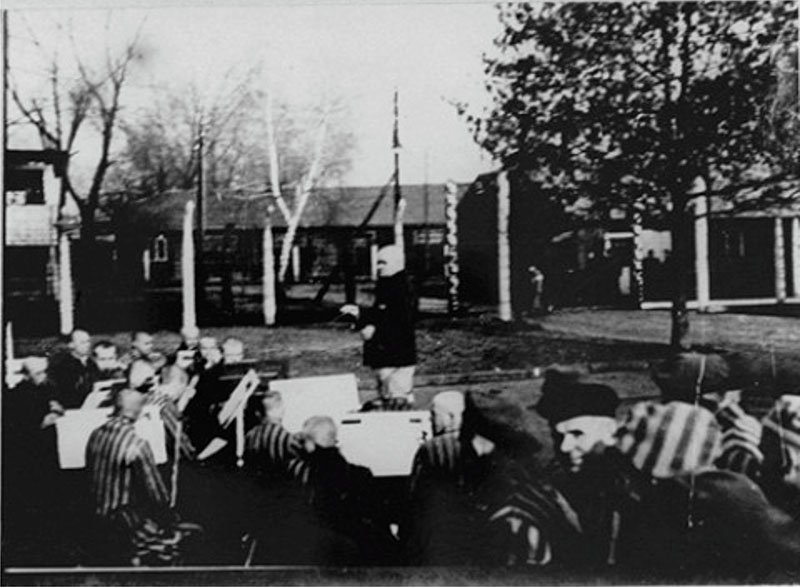
You will tell me that the Auschwitz bandstand did exist though and that it was evil as hell. I was able to track down a photo of the actual band putting on an open-air performance, courtesy of the Auschwitz Museum, but can’t find a single Jew being marched into the gas chamber. Where are the SS officers forcing them at gunpoint to play? They’re mysteriously absent. I thought this was an extermination camp. Nobody appears to be dying.
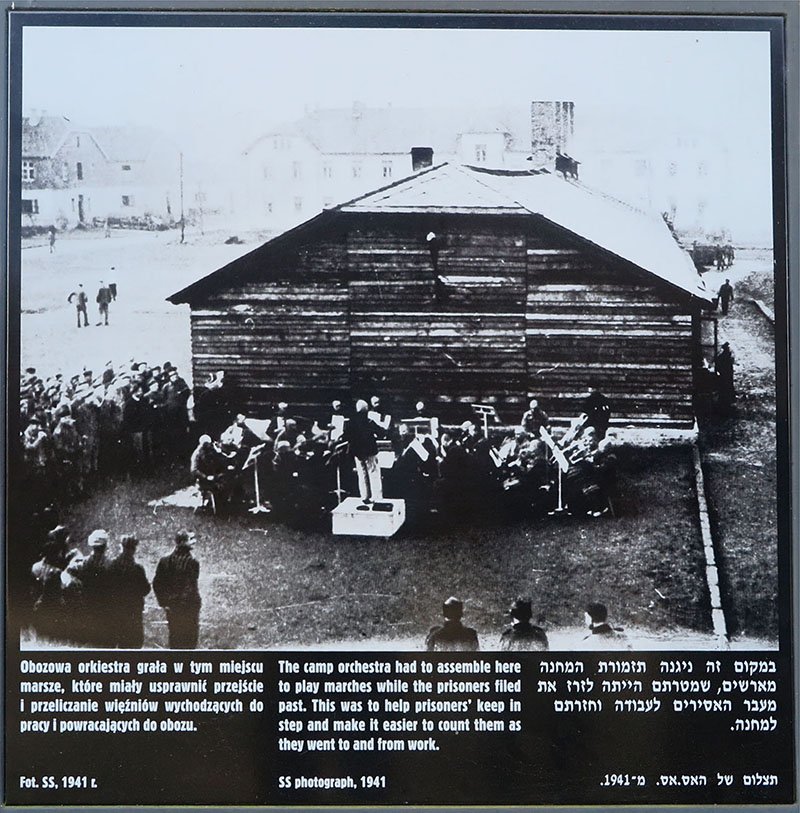
Here is yet another picture of the world-famous Auschwitz orchestra, tooting away on their bandstand. You can tell by the brick buildings in the background that we are listening in from Auschwitz I. The date is marked 1941, but as we have already seen with their stage performances, it might very well have been 1944.Other prisoners are standing around. Nobody is being marched anywhere. Why aren’t they working in the rubber factory? Must be a weekend. Looks like they’re having a perfectly good time.

BELIEVE IT or not, there was a real working gas chamber at Auschwitz, complete with the Holocaust storytellers favorite killing agent, Zyklon B. The Soviets totally spared this one for indoctrination purposes, right? Right….!?
Soviets demolished the building soon after The War. Bummer. Best to destroy the evidence, I guess. Just not before first snapping a picture. Take a note of the number 164 on the far right. Remember how the Soviets decided upon a fake chimney being built at Crematoria I? You’re probably looking at it. Soviet Intel comes cheap. They simply moved these bricks to that camp, in order that the Holocaust narrative feel more complete. Museum Curators prefer a symbolic gas chamber rather than the real thing, it seems.
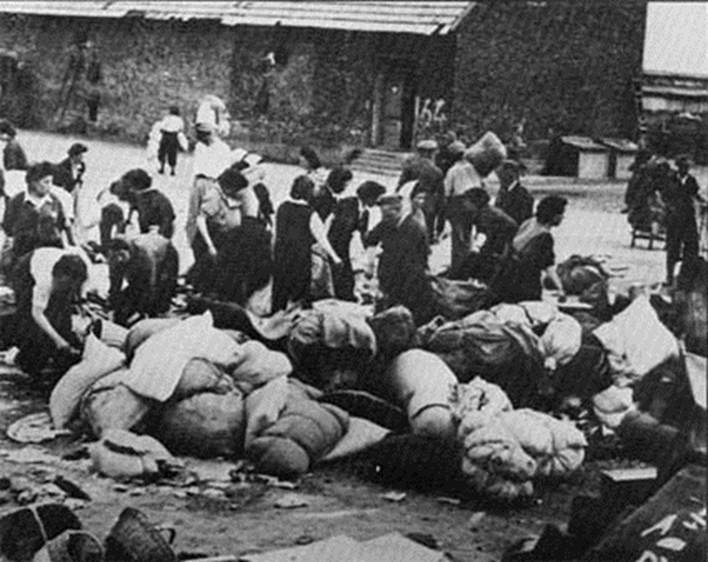
There it is again. Building 164. Prisoners knew it as the Kanada I delousing station. Apparently, the Russians weren’t the only ones to document its existence. Somebody even emptied an entire role of film, because we are actually given an insider’s glimpse at how the building was employed from various angles. We are often told these pictures were taken by a German, but that is likely based upon preconceived notions, as we have already seen a Jewish photographer making the rounds at Auschwitz I. Why are all of these bags being dropped off? For delousing purposes, of course.


Take note of the ladder. That little hole in the wall is where they dropped the Zyklon B. Uh-oh, is that woman in the white blouse (walking towards the ladder) volunteering for her own demise? No, she is simply dropping a load off for the dry cleaners. Nothing to see here. More specifically, nothing that our Museum Curators want you to see—and there’s a difference.
More photos from the same series reveal women prisoners sorting clothing from textile objects in the yard behind Kanada I. More lice killing. Also, every woman looks healthy. Their hair is kept nice. And their heads aren’t shaven yet. Must be doing a fine job at keeping the camp clean from lice.

THE SOVIET liberation of Auschwitz occurred on January 27, 1945. From the looks of it, the KGB immediately rounded up a couple of healthy-looking chaps in striped pajamas and asked to view the gas chamber. You know, seeing as how the 6 million number had already been decided upon. They knew just where to take them. Building 164. That’s where the Zyklon-B was kept. So much incriminating evidence. You will tell me the prisoners did not know about Crematoria II and only assumed this must be where the gassing secretly happened. And besides, the official narrative imagines the Nazi’s destroying Crematoria II and all other incriminating evidences in January 1945, some weeks or days earlier. How convenient, since the Soviet’s just so happened to destroy all incriminating evidence too. Wink-wink. Probably not related.

You’d think the KGB would be well aware of typhus in prison camps and the dire need for delousing—but no. The Soviets are even less capable than the Nazi’s, it seems. Which is why a Russian soldier is holding up a gas detector box as proof of Hitler’s final solution. Nothing good can come of Zyklon-B. Nothing at all. The Nazi’s really screwed up this time. Or did they? That door behind the soldier looks familiar. Feels like I’ve seen it before, but where?

Oh, there it is! Same door. Still building 164. The one which Soviet Russia admits to have demolishing, anyways. Kanada I. In case you were wondering, the sign on the door reads:
“Toxic gases! LIFE THREATENING DANGER on entering this room.”
Rather difficult trying to convince someone there’s a shower room behind the door with a sign like that, wouldn’t you think? Perhaps they should have removed it before taking the picture. Also, makes one wonder if the Nazi’s really cared that the presence of Zyklon-B be identified in their camp, seeing as how they were reportedly attempting to scrub all criminal activity.
And anyways, just look at that door. Peep-hole. Sturdy handle. Proper signage. It’s air-tight. What a beauty! And around the corner, we’ve already seen what a Zyklon-B insertion shoot should look like, complete with a ladder. The door which the Nazi’s built down at Crematoria I had none of these things. If you recall, a third of it was even made of glass. Hmmm. After they borrowed the bricks from this building to construct a decorative chimney, the actual working gas chamber door at Kanada I must not have fit upon its hinges.
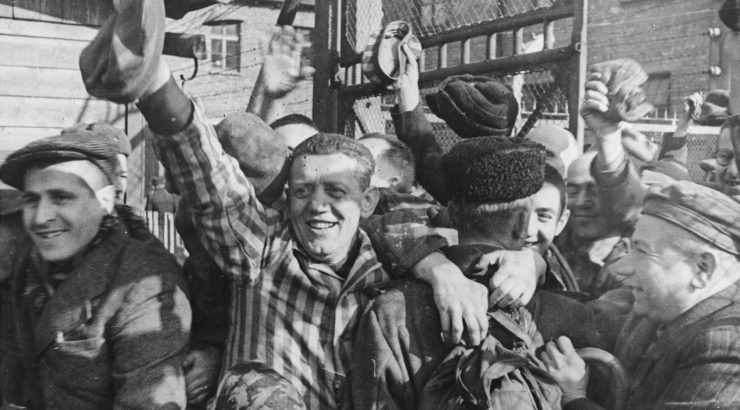
Aside from a small collection of Zyklon-B at the Auschwitz dry cleaners, Soviet Intel also thought it would make for a good idea to photograph the prisoners. They look excited. I would be too. Perhaps they don’t have the faintest clue how much life is going to suck under the USSR, but that is beside the point. What we are seeing is prisoners who were left behind by their Nazi captors, being too unhealthy to make the “death march.” They look reasonably dressed. Reasonably fed. Seeing as how the official narrative is at my disposal, none of this makes any sense. Have we forgotten about the swimming pool over at Auschwitz I? Probably.
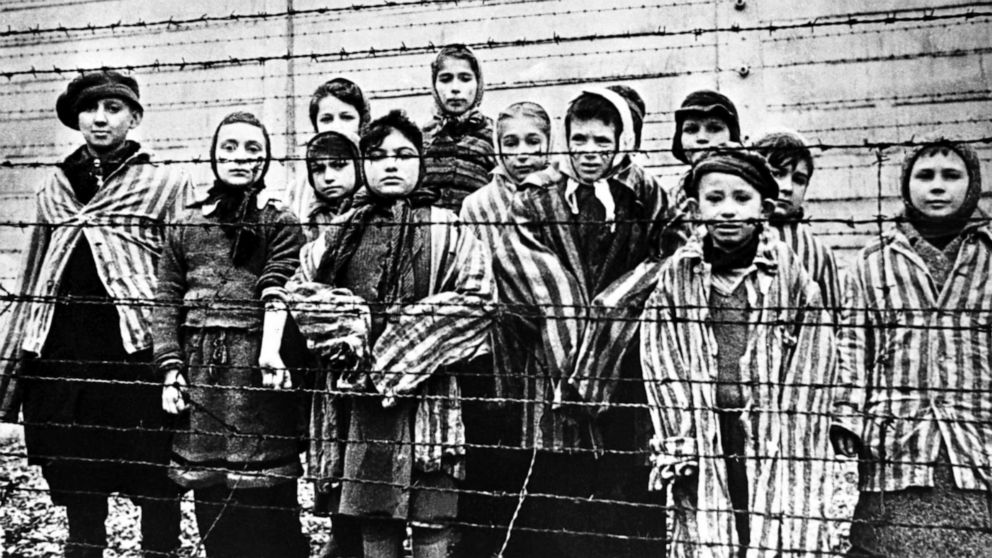
Why is there a street gang of children in Auschwitz? I thought the Nazi’s gassed whatever women and children that they could. Basically, whoever couldn’t work the plant. And often as soon as they arrived. Those are some bad ass kids and a couple of their moms. They must have learned how to live in the shadows, avoid the smell of dogs, become virtually unseen. Surely, stories were told about them.
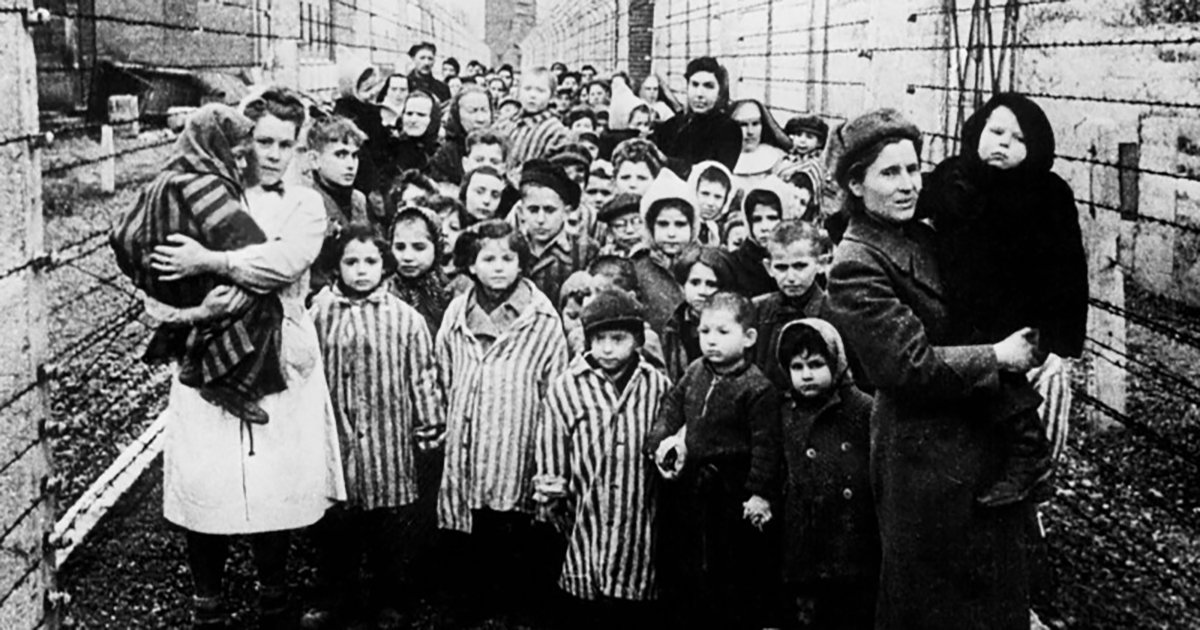
More of that phenomenal work by the boys over at the Kremlin will attest to the strange possibility that children and their moms began replicating in number at their arrival. Just look at the little guys. Tribbles—every last one of them.
That—or the Nazi’s actually managed to feed them and then deliver what garments they could for warmth. The only explanation the official narrative offers, is in shades of sadism.
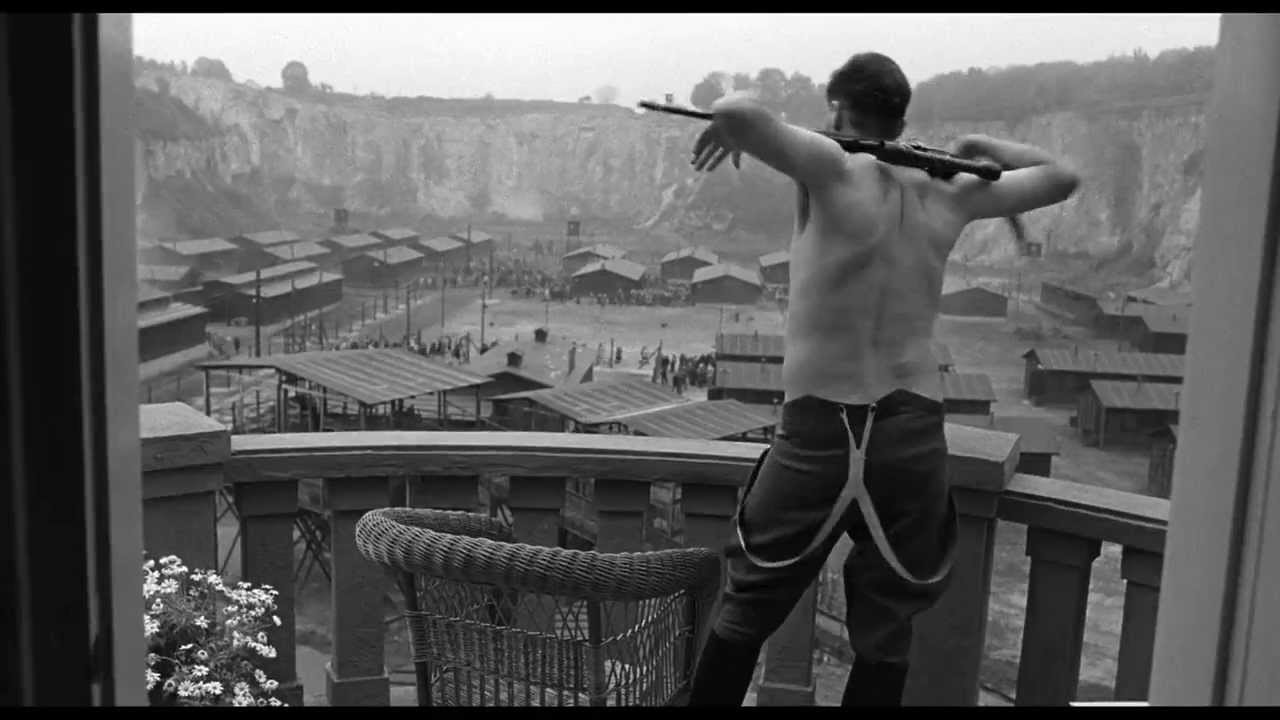
PERHAPS the most iconic retelling of Auschwitz doesn’t actually take place at the prison camp, as Spielberg’s movie, Schindler’s List, involves a conscious driven Oskar Schindler convincing SS-Untersturmführer Amon Göth, overseer of the Plaszów concentration camp, to send a total of 850 people to Brünnlitz rather than the alternative.
Fast forward to one particular scene in the move, and we find ourselves in the company of a bored, disgruntled, and shirtless Nazi commandment of Plaszów. Amon Göth again. He’s positioned on the balcony of his house with a hunting rifle over his bare shoulders. His house, by the way, is located upon a hill high above the camp so that he can look down on his prisoners—as a sadistic boy might simper over bugs with a magnifying glass, or a flamboyantly gay but closeted French king might randomly choose whom he might decapitate for his upcoming birthday from his castle. He then lifts the rifle to his shoulder and begins casually scanning for prisoners. The magnified image through the Nazi commandment’s telescope now fills the movie screen.
Right this very moment, you should begin to see the magic in movies at play. Pulling the trigger, a Jew drops to the ground. Discontented with his kill, the man pulls the trigger again. Another Jew is murdered. Bored with his target practice, the shirtless man then turns his attention upon a beautiful, sexy, woman lying on a bed just inside his house, breasts exposed. She’s a Jew, by the way. A prisoner from the camp.
The entire episode is fiction.
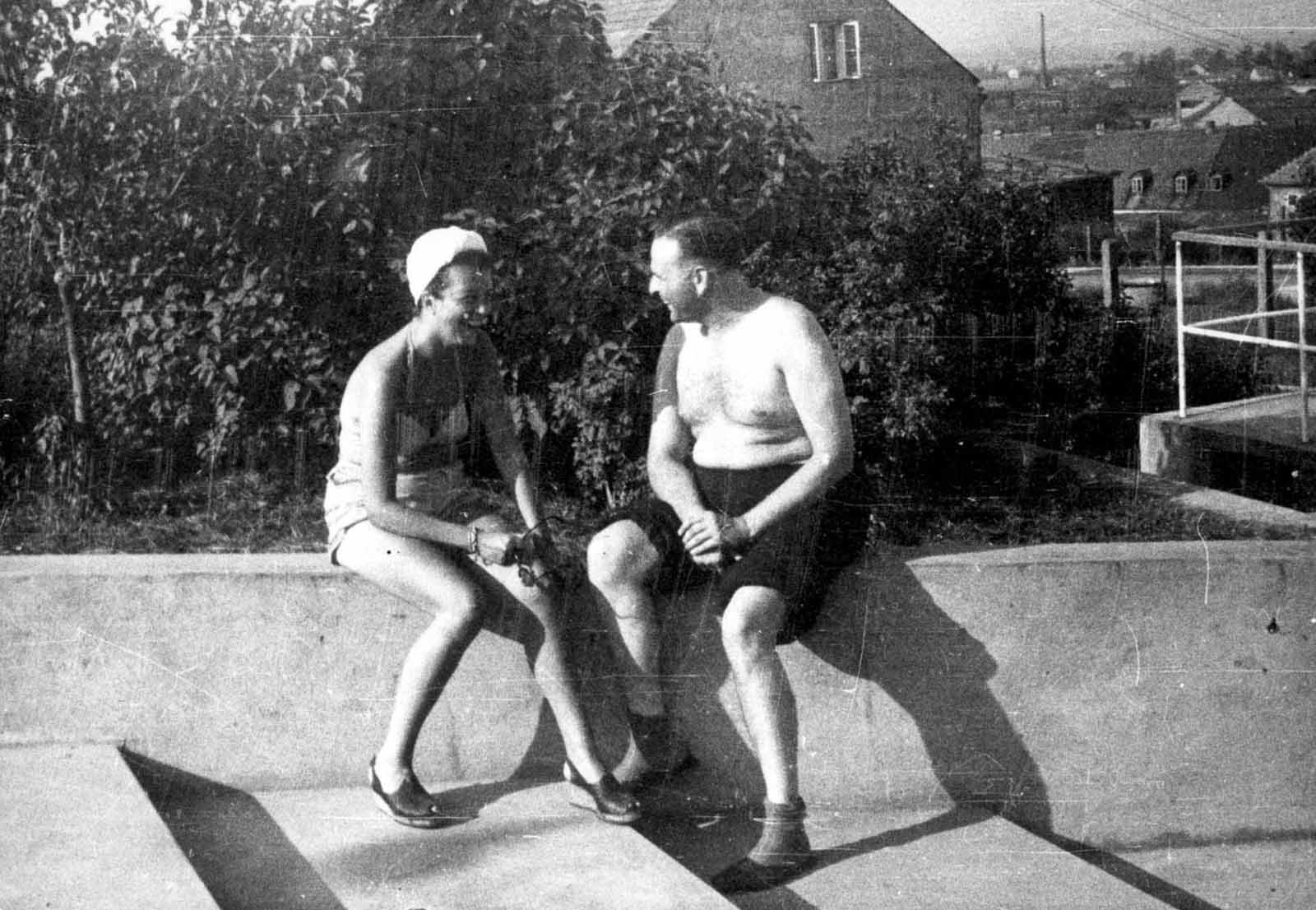
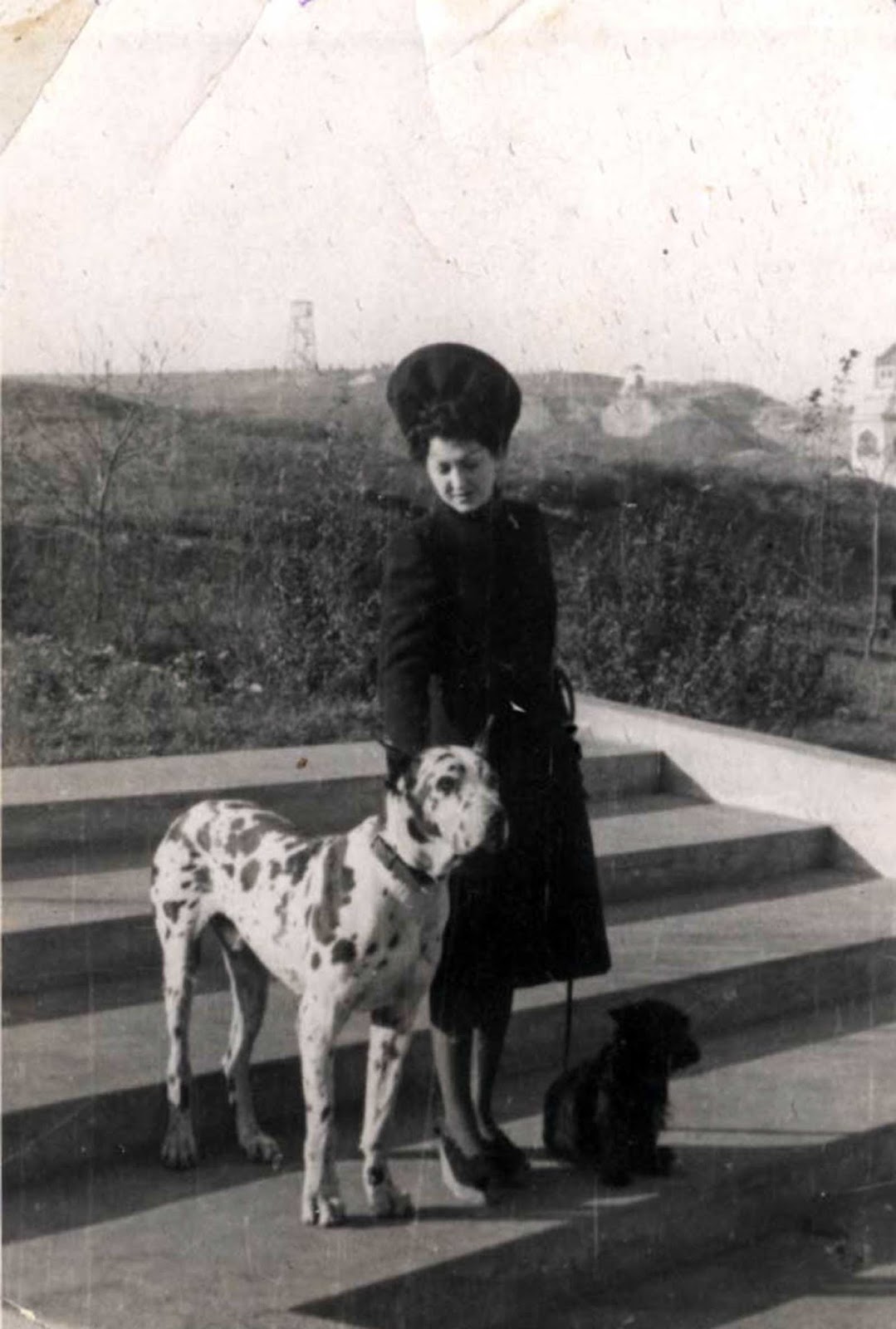 The real Plaszow camp was located on the other side of a hill from the commandment’s house, and completely out of sight from his balcony. Göth lived in the house with his fiancé Ruth Kalder, an aspiring actress whom Göth had met while working as a secretary for Oskar Schindler. After The War, Göth was extradited to Poland, where he was, according to Wikipedia, “found guilty of membership in the Nazi Party (which had been declared a criminal organization) and personally ordering the imprisonment, torture, and extermination of individuals and groups of people.” Sure, Amon Göth did have two Jewish housemaids selected from the camp, but they were not ravishingly beautiful, as Spielberg insists, nor was there ever any information provided that would naturally lead one to conclude that they were his sex slaves. If you want to know the identity of his naked beauty, it was the fiancé—Ruth Kalder. They parented a child together. Kalder actually described Göth as a cultured man with a singing voice. Spielberg transformed him into a dumb-ass jock.
The real Plaszow camp was located on the other side of a hill from the commandment’s house, and completely out of sight from his balcony. Göth lived in the house with his fiancé Ruth Kalder, an aspiring actress whom Göth had met while working as a secretary for Oskar Schindler. After The War, Göth was extradited to Poland, where he was, according to Wikipedia, “found guilty of membership in the Nazi Party (which had been declared a criminal organization) and personally ordering the imprisonment, torture, and extermination of individuals and groups of people.” Sure, Amon Göth did have two Jewish housemaids selected from the camp, but they were not ravishingly beautiful, as Spielberg insists, nor was there ever any information provided that would naturally lead one to conclude that they were his sex slaves. If you want to know the identity of his naked beauty, it was the fiancé—Ruth Kalder. They parented a child together. Kalder actually described Göth as a cultured man with a singing voice. Spielberg transformed him into a dumb-ass jock.
Spielberg’s account is based upon a novel by Australian Thomas Keneally, who personally visiting the concentration camps in 1980. Keneally had no real knowledge of what transpired there. The clever and imaginative penmanship simply derives from his head. One might argue it makes for good storytelling. And who really cares about being honest when telling and expounding upon the accomplishments of those Nazi assholes? Feel free to pause here and re-read that last sentence over and over again. Take as long as you’d like. Try not to let cognitive dissonance win the day. Steven Spielberg’s audience is told that they are looking into real historical events, but have absolutely no clue—while the Master shaman is tugging at their heart strings—that they’re being lied to in order to pave the road towards Zionism.
Movie magic.
 THOMAS Keneally was making crap up in his 1982 novel, Schindler’s Ark, but really, there’s no surprise there, as Holocaust storytellers have made a pastime of mixing truth with little white lies. You will recall that the Soviet Union blessed the world with over half a century of imaginative tales before the Berlin Wall came down and visitors could investigate what had already been seared into their collective consciousness by visiting the camps for themselves. One such novel, I Am Alive, was published in 1961 by Kitty Hart-Moxon.
THOMAS Keneally was making crap up in his 1982 novel, Schindler’s Ark, but really, there’s no surprise there, as Holocaust storytellers have made a pastime of mixing truth with little white lies. You will recall that the Soviet Union blessed the world with over half a century of imaginative tales before the Berlin Wall came down and visitors could investigate what had already been seared into their collective consciousness by visiting the camps for themselves. One such novel, I Am Alive, was published in 1961 by Kitty Hart-Moxon.
She wrote a second script book in 1983, titled Return to Auschwitz. That one was made into a movie. There’s a rather brilliant quote wherein we glean—and are expected to retain—the following information:
“Working around the clock, the four units together could dispose of about 18,000 bodies every twenty-four hours, while the open pits coped with a further 8,000 in the same period.”
Hart-Maxon’s claim requires a calculator. 18,000 plus another 8,000 totals 26,000 bodies every 24 hours. That’s a whopping182,000 Jews disposed of every week. But wait. The magic 6 million number is reached in as little as 33 weeks. Sounds legit. No wonder she landed a book deal.
The Wikipedia lists Kitty Hart-Moxon as an Auschwitz survivor, having been sent to the Auschwitz-Birkenau death camp in 1943 at the age of 16. How exactly do you become a survivor when all they did was march some people and not others into a gas chamber? She apparently survived her marching orders for two years, during which time she became a momentary witness of Jewish gassing. Her story has her sunbathing opposite Auschwitz-Birkenau Crematorium IV, because where else would you absorb the rays of a summer afternoon in Auschwitz if you were a teenager with a killer bod? It is there where she claims to have caught a member of the SS, clumsily climbing up a ladder in order to tip Zyklon-B into the chamber.
Apparently, the SS didn’t mind having a Jewish teenage girl in an extermination camp watch the ordeal in leisure. She then claims to have observed human ashes rising into the skyline ten minutes later. Mm-hmm, ten minutes. That’s some seriously quick work on part of the Sonderkommandos. Already shaved everyone, cleared the gold from the whereabouts of their throat, cleaned the shit off, and then hauled them into the furnace.

TEN years ago (and some change), I was at the height of my ignorance. I visited Washington D.C. regularly as a city of divine beauty and inspiration—stars and stripes bleeding from my eye-balls. I’ll never forget that moment I visited the Smithsonian’s Holocaust Museum for the very first time, somewhere in the proximity of 2007, and there was a man standing near the entrance handing out information as to why we’ve been lied to about everything.
The guy was just standing there off to the side—totally passive. He wasn’t shouting. He wasn’t getting into anyone’s face. He just stood there with a sign that read something along the lines of “THE HOLOCAUST WAS A HOAX,” or something to that effect, and was willing to speak with anyone who engaged. And let me tell you, I have rarely experienced so much hate as I did while entering that museum. Therefore, I have a fairly good picture of what I’m in for after publishing papers such as this one. People were shouting, grinding their teeth, calling him horrid names. He was probably even spat upon.
I didn’t dare approach him—not yet. I simply watched people fling hate as a substitute for pooh. The plan was, I’d comb through the museum and then engage him on my way out. I hadn’t prepared for kind words. Upon finally exiting two or three hours later, the man was gone.
Not that I haven’t looked for him. I’ve passed through Washington D.C. now dozens of times, and with every successive visit, whenever I’m in the vicinity of the Holocaust Museum, I keep a careful lookout for the HOLOCAUST HOAX man.
To this very day, I think about him often.
A little over a decade ago, I was so blinded. Pre-conditioned and programmed. We’re talking completely lost to the heliocentric globe machine as to think to myself: “Now I’ve seen it all. Finally, I’ve beheld with my own eyes the canker-breath, douche-bag of the earth.” And now that Washington D.C. has essentially become the very seat of Satan on earth, I believe him to be one of the bravest men I ever might have known.
Noel
